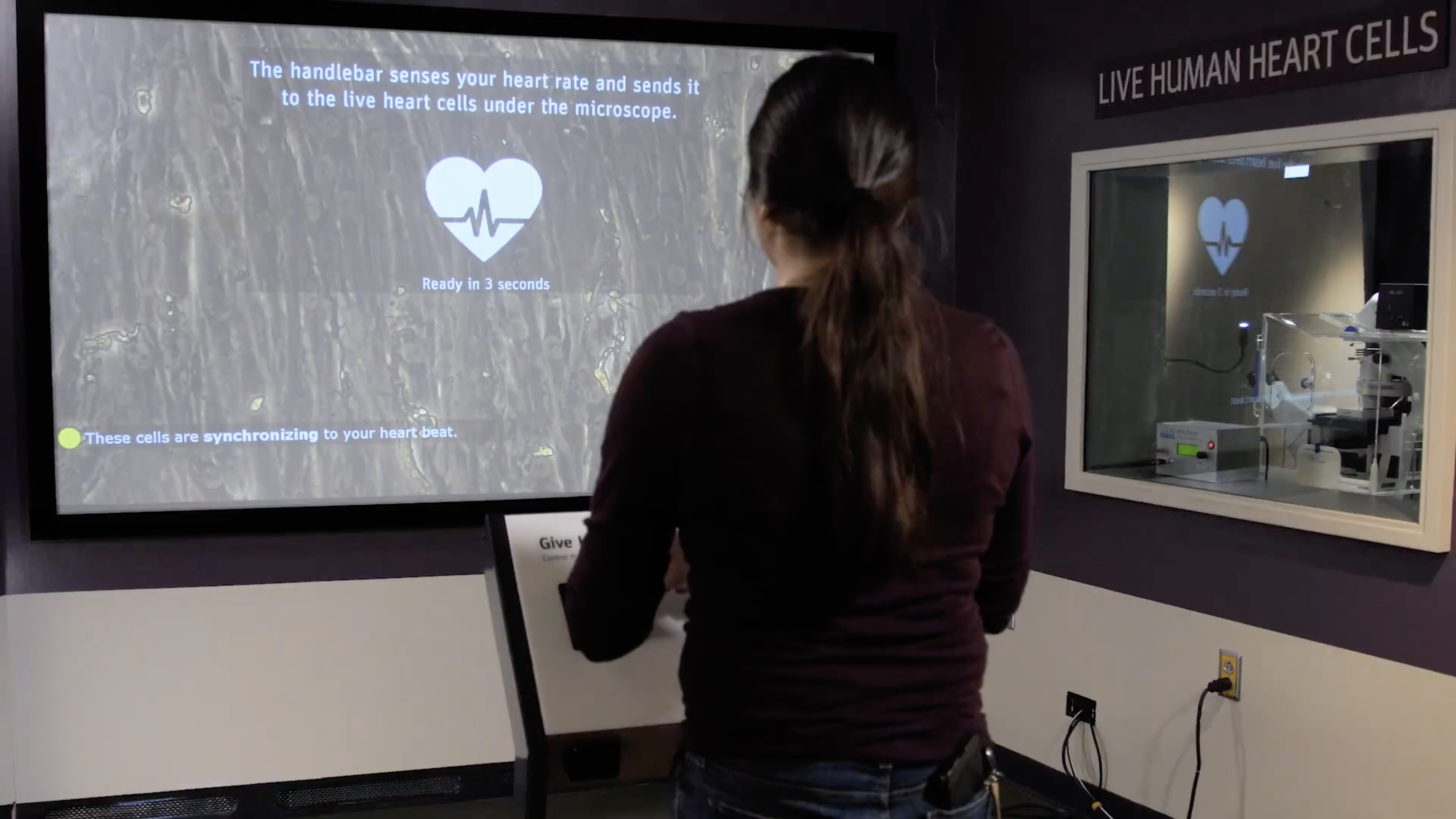We spend a lot of time in research labs, which is great fun, but we often don’t see the results of that work in the real world. When our friends at Gladstone Institutes called about producing a video for the Give Heart Cells A Beat exhibit at the Exploratorium, a San Francisco landmark, that changed.
Gladstone had been working with scientists at the Exploratorium for over two years to create an exhibit that would allow visitors to physically effect heart stem cells in a petri dish and see the results on a big screen. The visitor puts their hands on a metal handle bar which transmits their heartbeat to the stem cells, and an image of the stem cells is projected on a big screen in front of the visitor. It was amazing to see!
As a visitor, it’s very simple: you step up, put your hands on the bar and in a minute, you see the stem cells react to your heartbeat. But to go behind the scenes, you hear about all that goes into making that seemingly simple process happen. Relationships and collaboration are important in the world of scientific research. The initial idea for this exhibit came from a Gladstone scientist, but making it work fell on the team at the Exploratorium. Cardiomyocite (heart muscle) stem cells have a short life span, so getting cells from Gladstone to the Exploratorium is one issue, and then determining the best way to keep them alive and available for the public to interact with is another. Figuring out the logistics of when to get new cells and how to store them was key. Sometimes it’s as easy as Exploratorium Living Systems Facility Manager, Dana Carrison-Stone, riding her bike to Gladstone and back with a cooler full of dry ice to protect the stem cells while in transit.

Storytelling is our specialty. We love being invited to share complex stories with lay audiences. For this project, we worked closely with our contacts at Gladstone to conduct two video shoots over a year apart that needed to be seamless when edited together. Covid-19 caused the delay between shoots, but not a delay in the importance of the story and research. We appreciate the trust that world-class institutions like Gladstone Institutes and the Exploratorium put in us to create and share important stories like this one.